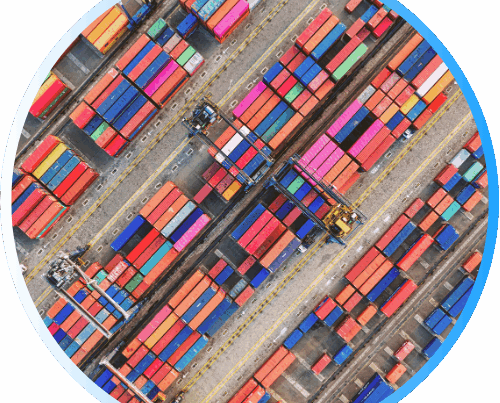Rate Related Update and Market Conditions
📌 Current U.S. Tariff Status (as of November 14, 2025)
-
EU to End Low-Value Duty Exemptions:
The EU has agreed to phase out duty-free treatment for goods under €150, citing unfair competition and environmental impact. A temporary solution is planned for 2026, with full implementation by 2028 under the new EU Customs Data Hub. -
U.S. to Lower Tariffs on Agricultural Imports:
Treasury Secretary Scott Bessent confirmed plans to reduce tariffs on select agricultural goods, including coffee and bananas. Current combined tariffs reach 50% on imports from Brazil and 10–35% from Colombia and Canada. -
U.S.–China Tariff Truce Measures Begin:
Both sides have started implementing their October 30 agreements. The U.S. has halved its fentanyl tariff on China to 10% and suspended port fees for one year, with China reciprocating. Beijing also postponed rare earth export controls and committed to new soybean purchase targets through 2028. -
Tariff Dividend Proposal:
President Trump proposed a $2,000 tariff dividend for eligible Americans, pending Congressional approval. Distribution methods are still under review. -
IEEPA Tariff Case at Supreme Court:
The Court heard arguments on November 5 regarding the legality of IEEPA tariffs. A decision is expected by mid-2026, which could determine whether duty refunds are issued or collections continue.
Source: whitehouse.gov, politico.com, whitehouse.gov
Rate Related Update and Market Conditions
Ocean Trade Lane Snapshot
Ocean market conditions remain stable across major east–west trades, with overall capacity exceeding demand levels. On the Trans-Pacific Eastbound (TPEB), vessel capacity has rebounded sharply post–Golden Week, holding above 80% for November and creating continued downward pressure on spot rates. The November GRI has been withdrawn, and the Peak Season Surcharge has been postponed until December as carriers introduce limited-rate “specials” to fill space. On the Far East Westbound (FEWB), Rotterdam congestion remains severe, prompting some carriers to omit calls and discharge cargo at alternate ports such as Antwerp and Le Havre. Despite capacity-driven GRIs, booking demand remains muted and rate levels vary widely by service, with faster routes seeing higher utilization. Across the Trans-Atlantic Westbound (TAWB), European port congestion continues, particularly in Antwerp, Hamburg, and the South Mediterranean, where delays of up to a week persist. Weak demand is pressuring rates, and carriers are expected to intensify blank sailings and vessel downsizing measures to stabilize the market.
Air Freight Market Update
Airfreight activity across Asia remains elevated heading into mid-November, with sustained demand from e-commerce, technology, and AI-related sectors. North and South China continue to experience tight space to North America as freighter fleet reductions and heavy cargo flows constrain capacity, while seasonal shopping demand is lifting Asia–Europe volumes. Taiwan, Vietnam, and Malaysia are seeing particularly strong exports, with limited uplift available through the end of the month. South Korea remains steady with balanced capacity, though routes to Canada are under strain. Overall, the regional market remains firm, and shippers are strongly advised to secure bookings well in advance to ensure timely movement.
Sources: xeneta.com, maersk.com, yangming.com, evergreen-line.com, supplychaindive.com
Asia–Latin America Freight & Port Update
1) Freight Rate & Capacity Snapshot
The Drewry World Container Index dropped 5% this week to $1,859/40-ft container, marking a reversal after four weeks of gains. Transpacific spot rates from Shanghai to New York and Los Angeles fell about 15% and 12% respectively, while carriers cited weakening demand and uncertainty over return to Suez routes for the softness.
Sources: gcaptain.com
2) Port Operations & Infrastructure
Red Sea routing uncertainty continues to influence Asia-to-Latin America trades: analysts warn a large-scale reroute through the Suez Canal would add capacity and press rates lower — a factor importers should monitor as scheduling and transshipment options could shift.
Sources: marinelink.com

U.S. Government Shutdown Ends — Supply Chain Still Under Strain
The 43-day U.S. federal government shutdown officially ended on November 11, 2025, yet significant operational backlogs remain. While CBP kept working, multiple Partner Government Agencies (PGAs) paused certain functions — including permit reviews, air-traffic control and agency data releases — slowing trade flows and regulatory processing. Commodity markets, especially metals, were already reacting to the resumption of federal spending and infrastructure projects. Importers should keep extra lead-time for documentation, double-check approvals and allow for lingering transit or clearance delays in the weeks ahead.
Container Freight Rates Fall as Post-Holiday Demand Eases, Red Sea Risks Persist
Global container freight rates declined this week as post-holiday demand softened. The Drewry World Container Index dropped 5% to $1,859 per forty-foot container, with the steepest decreases on Transpacific routes. Rates from Shanghai to New York and Los Angeles fell 15% and 12%, respectively. Analysts cited continued uncertainty around Red Sea shipping routes, noting that any large-scale return to Suez Canal transits could add capacity and further pressure global freight prices.


